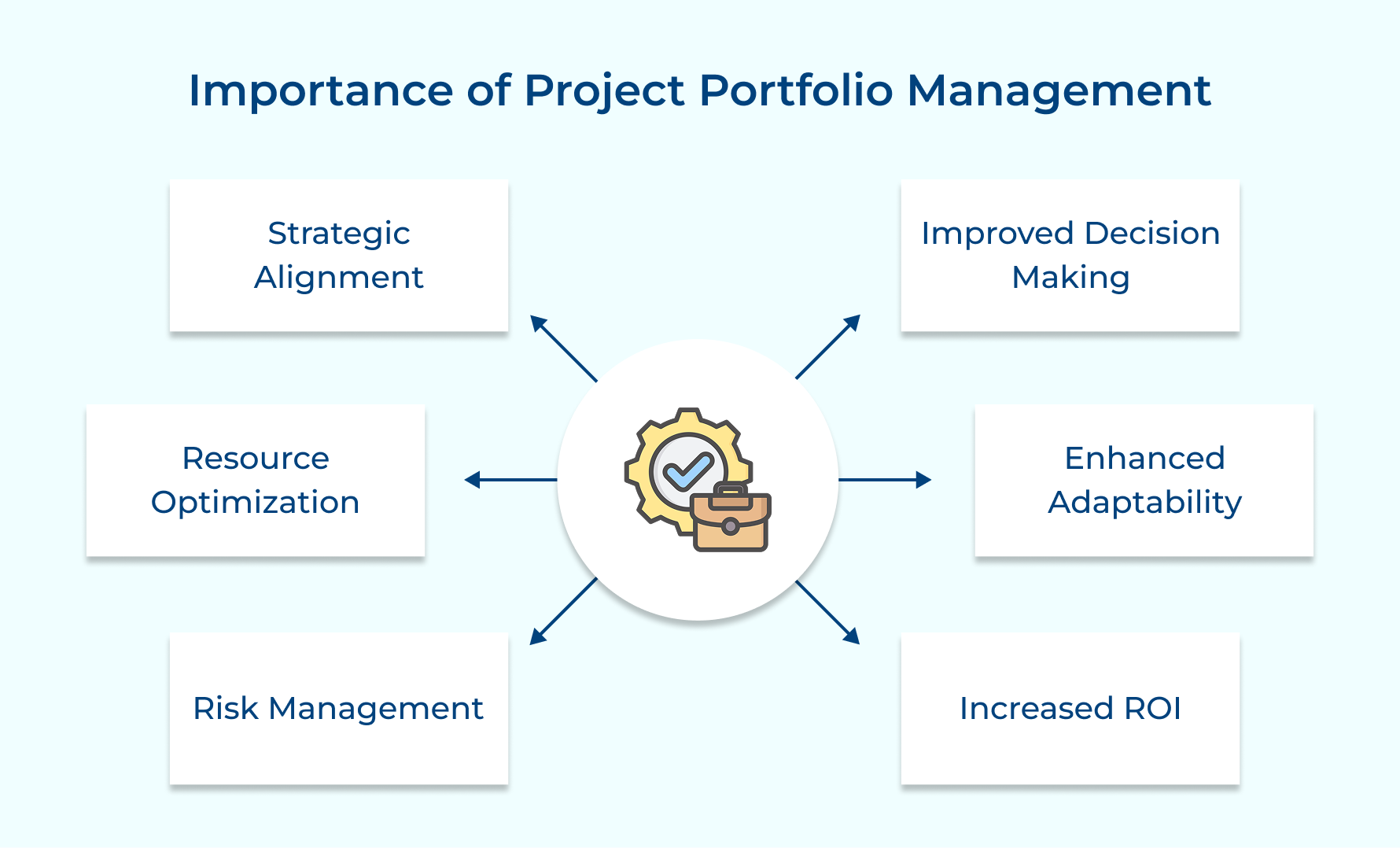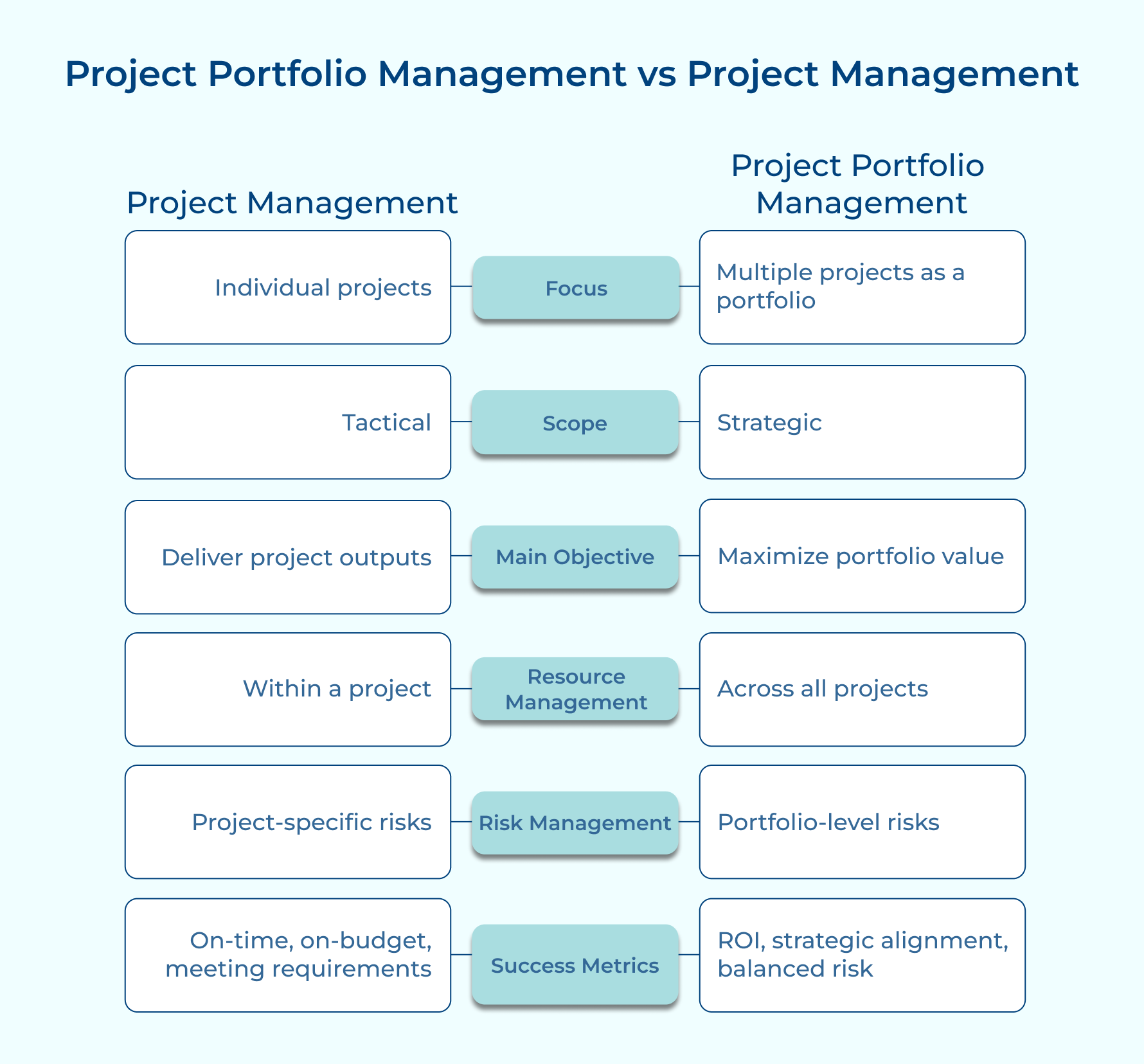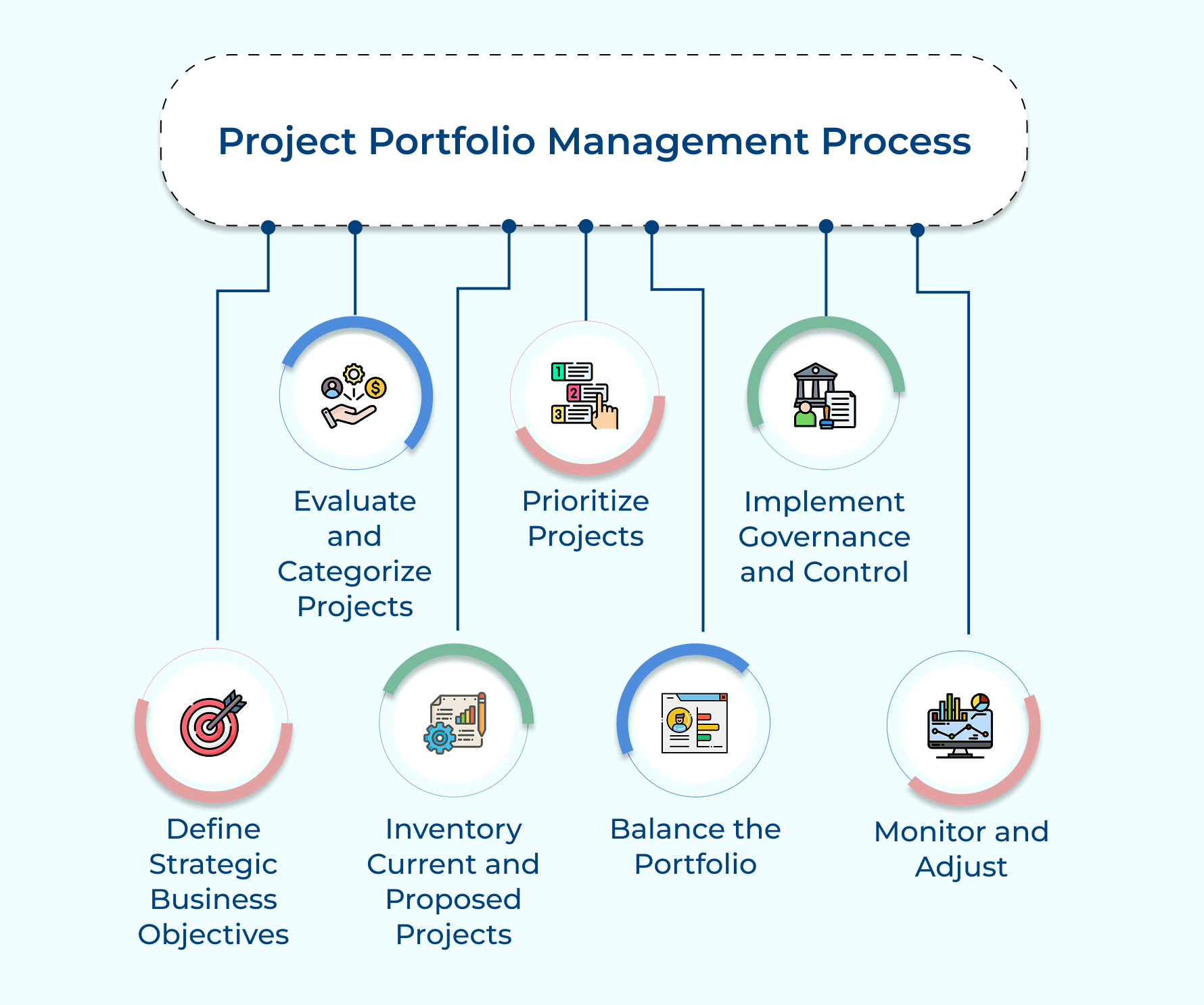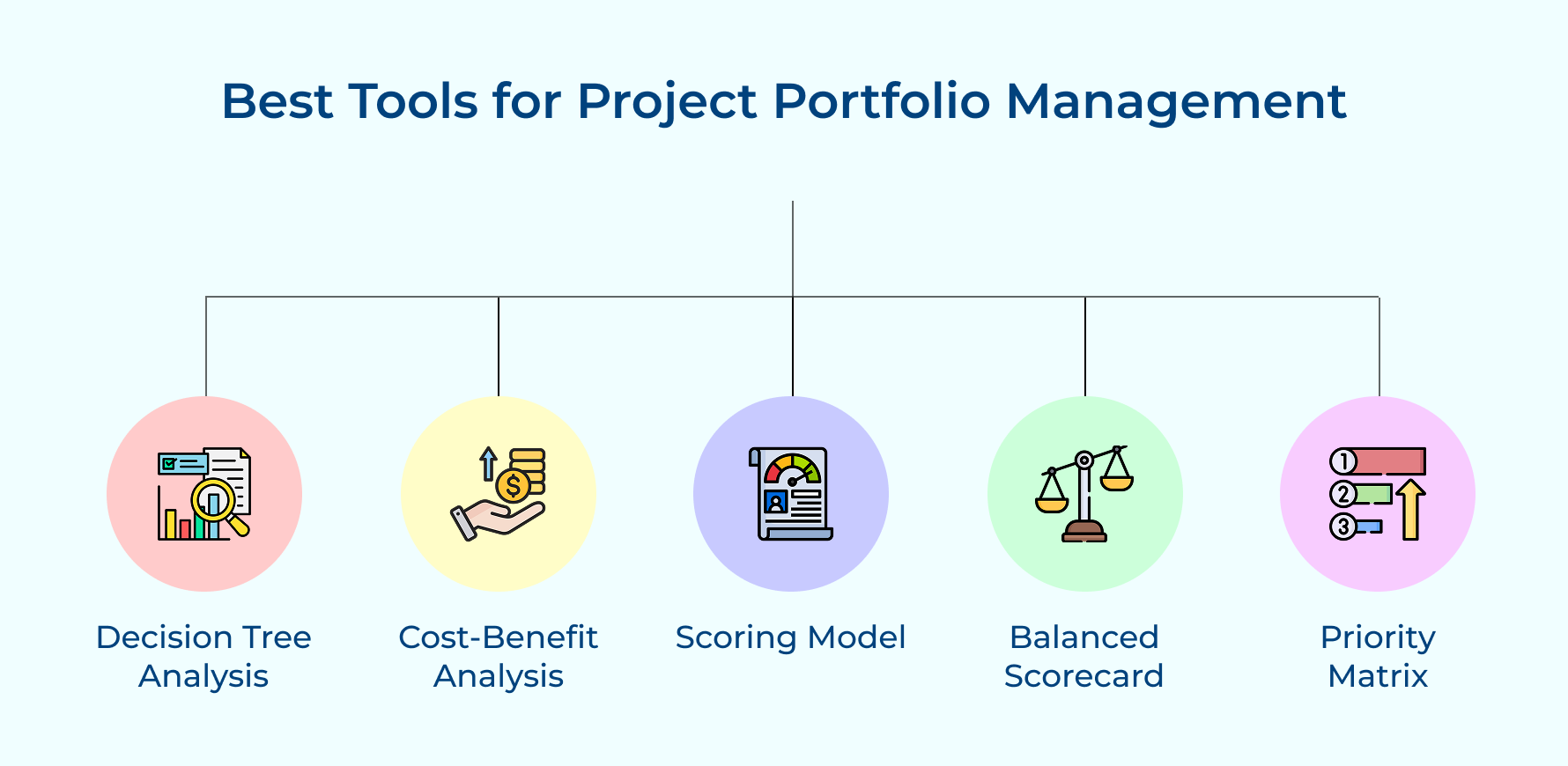What is Project Portfolio Management? 7 Steps to Success
- What is Project Portfolio Management (PPM)?
- Importance of Project Portfolio Management
- Project Portfolio Management vs Project Management
- 7 Steps of a Project Portfolio Management Process
- The Best Tools for Project Portfolio Management
- Driving Success with a Robust PPM Framework
- FAQs about Project Portfolio Management (PPM)
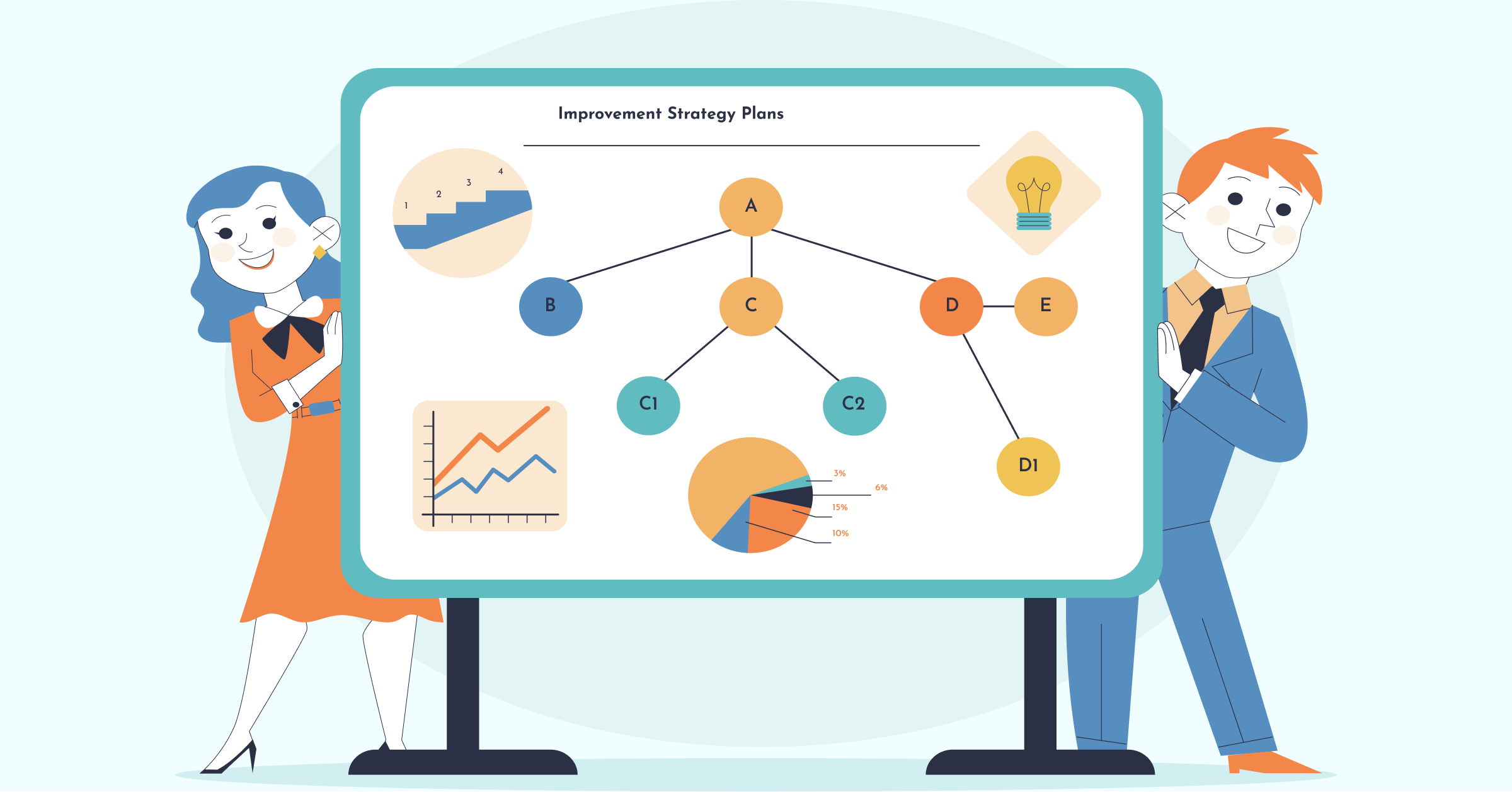
Key Highlights
Managing multiple projects effectively can be a tough balancing act. That’s where project portfolio management (PPM) comes in!
PPM lets agencies as well as businesses prioritize, organize, and execute projects with clarity along with alignment to goals.
The approach not only enhances productivity but also helps in making better, data-driven decisions.
Let’s dive in and explore its benefits!
What is Project Portfolio Management (PPM)?
Project portfolio management (PPM) is the centralized management of an organization’s projects, programs, and related work as a cohesive portfolio.
It involves selecting, prioritizing, and overseeing multiple projects to align them with strategic business objectives as well as optimize resource allocation.
PPM enables leadership to make informed decisions about which projects to pursue, how to allocate resources effectively, and how to maximize return on investment.
PPM objectives:
- Align projects with organizational strategy to ensure all efforts contribute to overarching business goals.
- Optimize resource allocation across projects to maximize efficiency.
- Balance risk and reward across the project portfolio to maintain a healthy mix of initiatives.
- Provide visibility and transparency into project performance for better decision-making.
Importance of Project Portfolio Management
PPM helps businesses make informed decisions, reduce risks, and maximize the return on investment across their project initiatives. Let’s explore more about its importance.
1. Strategic Alignment
Project portfolio management (PPM) provides a bird’s-eye view of all initiatives. Thus, enabling leadership to select and prioritize projects that directly contribute to the company’s long-term goals. The alignment minimizes resource waste on projects that don’t serve the organization’s broader mission.
2. Resource Optimization
Resource allocation requires project managers to understand the entire landscape of ongoing and potential projects. A thorough analysis helps you make informed decisions about where to invest time, money, and human capital for maximum impact. The optimization leads to improved productivity and reduced bottlenecks.
3. Risk Management
A portfolio approach to project management allows for better risk assessment and mitigation at a macro level. PPM helps identify interdependencies between projects and potential risks that might not be apparent when viewing projects in isolation. The comprehensive view enables more effective risk management strategies across the entire portfolio.
4. Improved Decision Making
PPM provides leadership with data-driven insights for making informed decisions. By offering a clear view of project performance, resource utilization, and strategic alignment, PPM empowers executives to make choices that maximize organizational value as well as minimize inefficiencies.
5. Enhanced Adaptability
The current business scenario is all about the ability to adapt quickly. PPM facilitates agility by providing a framework for quickly reassessing and realigning project priorities in response to market changes, new opportunities, or emerging threats.
6. Increased ROI
Project portfolio management (PPM) is all about boosting the return on investment by focusing on projects that truly align with a business’s goals. It helps you allocate resources smartly, manage risks better, and make sure every project adds real value.
Project Portfolio Management vs Project Management
Project Portfolio Management (PPM) and Project Management (PM) are two distinct but interconnected disciplines. While both aim to drive successful outcomes, they operate at different levels and with different focuses.
Project Management is concerned with the successful execution of individual projects. It involves planning, organizing, and managing resources to achieve specific project goals within defined constraints of time, budget, as well as scope. Project managers focus on delivering specific outputs, meeting milestones, and ensuring quality standards for a single project.
In contrast, Project Portfolio Management takes a broader, more strategic view. PPM is about managing multiple projects as a cohesive portfolio, aligning them with organizational goals, and optimizing resource allocation across all projects. It involves selecting, prioritizing, and overseeing projects to maximize the overall value to the organization.
7 Steps of a Project Portfolio Management Process
The Project Portfolio Management (PPM) process involves a series of structured steps to ensure projects are strategically aligned, effectively prioritized, and efficiently executed. Here’s a breakdown of the seven key steps that drive successful PPM.
1. Define Strategic Business Objectives
Strategic objectives are like a roadmap, ensuring every project supports the big-picture goals of your organization.
When focusing on these, you get a clear direction for selecting and prioritizing projects – no more wasted resources on initiatives that don’t align with your vision.
Wondering how to make these objectives actionable?
Start by asking: Are our goals clear and measurable?
Gather key stakeholders for a workshop to nail down specific, strategic objectives. Then, create a statement for each goal with concrete targets and timelines.
Also, remember, it’s not a “set it and forget it” process. Review these objectives regularly to keep them relevant as the market evolves.
2. Inventory Current and Proposed Projects
Imagine you’re managing several projects across different teams, but things feel scattered, some projects overlap, and others seem to lack focus. This is where a comprehensive project inventory can be a game-changer.
For example, say you have three different teams working on marketing initiatives. By using an inventory, you might spot that two projects are targeting the same customer segment, creating unnecessary overlap.
With everything organized in one place, it’s much easier to decide where resources are best allocated and avoid duplicating efforts.
Ready to set one up? Start with a standardized project proposal template so all project details are easy to compare. Use project management software to keep everything centralized as well as easy to access, and conduct regular audits to ensure your inventory is always up-to-date.
3. Evaluate and Categorize Projects
Evaluating and categorizing projects can give you a clear picture of each project’s value, nature, and risk. It’s like creating a guide to help you decide which initiatives to focus on, ensuring you’re investing in projects that truly make a difference.
Here’s how to make evaluation and categorization work for you:
Develop a scoring system
- Score projects based on key factors like strategic fit, financial return, and risk level.
- It helps you objectively compare projects, making it easier to see which ones bring the most value.
Create clear project categories
- Group projects into categories that align with your organization’s goals—like “high ROI,” “long-term growth,” or “risk mitigation.”
- These categories will help you balance your portfolio and allocate resources smartly.
Bring in cross-functional perspectives
- Involve team members from different departments in the evaluation process.
- Diverse insights will help you catch risks, spot opportunities, and make more well-rounded decisions.
4. Prioritize Projects
Suppose your team is juggling projects in marketing, product development, and customer experience. By creating a ranked list of projects, you can see which ones align most closely with your strategic goals.
Maybe a new product launch ranks higher than a website update because it promises a bigger return on investment. Prioritization gives you a clear view of where to focus first.
But, how do you choose?
Use a weighted scoring model
- Assign scores based on factors like strategic alignment, expected return, and urgency. This way, the projects with the greatest potential impact rise to the top.
Run scenario analyses
- Test out different prioritization approaches to see how they might affect your project outcomes.
Adjust priorities regularly
- Keep in mind that priorities shift. Revisit your list regularly to stay aligned with changing business needs and goals.
5. Balance the Portfolio
Portfolio balancing is all about creating a well-rounded mix of projects, with varied types, risks, and timelines. This approach helps organizations stay stable while still pushing for growth and innovation.
By balancing the portfolio, you can keep things running smoothly without overextending resources as well as ensure your projects align with both immediate needs and long-term goals.
For example, using visual tools like bubble charts makes it easier to see where each project stands and spot any imbalances—say, too many high-risk projects at once.
Setting target allocations for different project types, like innovation projects versus process improvements, helps keep resources spread out wisely.
By using a “rolling wave” approach to adjust the mix periodically, you can adapt to changing needs and keep the portfolio on track for maximum impact.
6. Implement Governance and Control
Governance and control mechanisms ensure decisions are consistent, resources are used effectively, while everything stays aligned with your organization’s strategy.
To keep things on track, schedule regular portfolio review meetings where you can evaluate project updates, address risks, and make timely decisions.
Using standardized reporting during these meetings ensures everyone’s on the same page, making decision-making smoother and more effective.
With governance in place, managing the project portfolio becomes a well-organized process that keeps projects aligned and accountable.
7. Monitor and Adjust
Continuous monitoring and adjustment keep your project portfolio aligned with shifting priorities as well as market changes. By regularly tracking performance, you can catch issues early and adjust as needed, ensuring your resources are working toward the most valuable outcomes.
Here’s how to make monitoring and adjustment work for your portfolio:
Set up a real-time dashboard
- Use a dashboard to get an instant view of key metrics and project statuses.
- This visibility lets you quickly spot areas that need attention or adjustments.
Schedule quarterly health checks
- Conduct regular reviews to see how the portfolio is performing overall.
- Check for alignment with strategic goals and adjust project priorities if necessary.
Establish a clear process for project termination or resource reallocation
- Create guidelines to identify when a project is underperforming.
- Having a formal process ensures that resources can be redirected efficiently to higher-value projects.
The Best Tools for Project Portfolio Management
Choosing the right tools for project portfolio management is essential to streamline processes. These tools empower organizations to plan and monitor projects effectively, driving overall portfolio success.
1. Decision Tree Analysis
The given method uses a tree-like model of decisions and their possible consequences. It’s particularly useful for complex projects with multiple decision points.
Decision trees help visualize different scenarios, probabilities, and potential outcomes, enabling managers to make informed choices based on expected values along with risk assessments. The approach is especially valuable when dealing with uncertainties in project selection.
2. Cost-benefit Analysis
Cost-benefit analysis involves comparing the projected costs of a project against its expected benefits. It quantifies both tangible and intangible factors in monetary terms, allowing for a straightforward comparison between different projects.
The method is particularly effective for evaluating the financial viability of projects and ensuring that resources are allocated to initiatives with the highest return on investment.
3. Scoring Model
Scoring models involve rating projects based on multiple weighted criteria. These criteria often include factors like strategic alignment, risk, resource requirements, and potential return.
Each project is scored against these criteria, resulting in a total score that can be used for ranking and selection. It is highly flexible and can be customized to reflect an organization’s specific priorities as well as objectives.
4. Balanced Scorecard
The Balanced Scorecard approach considers four perspectives: financial, customer, internal business processes, and learning as well as growth. It ensures a holistic view of project performance as well as alignment with organizational strategy.
Balancing short-term and long-term objectives across these four dimensions helps in creating a well-rounded project portfolio that addresses various aspects of organizational success.
5. Priority Matrix
A priority matrix is a visual tool that plots projects on a grid based on two key variables, typically urgency, and importance. You can quickly categorize projects and identify those that require immediate attention versus those that can be delayed or discarded.
It’s useful for managing resource allocation in environments with competing priorities and limited resources.
Driving Success with a Robust PPM Framework
Project Portfolio Management (PPM) is essential for organizations aiming to optimize resource allocation, enhance project outcomes, and align initiatives with strategic goals. Effectively managing a portfolio of projects allows businesses to prioritize their efforts, reduce risks, and ensure that resources are used efficiently.
Modern PPM approaches emphasize data-driven decision-making, agile adaptation, and strategic alignment of projects with organizational goals. As organizations embrace PPM, they improve project visibility as well as drive greater agility and adaptability. Ultimately, a robust PPM strategy leads to sustainable growth and the successful realization of business objectives.
Limit time — not creativity
Everything you need for customer support, marketing & sales.
Neeti Singh is a passionate content writer at Kooper, where he transforms complex concepts into clear, engaging and actionable content. With a keen eye for detail and a love for technology, Tushar Joshi crafts blog posts, guides and articles that help readers navigate the fast-evolving world of software solutions.
